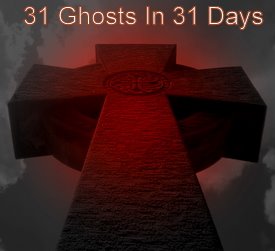Captain Arlington H. Mallery was puzzled. The captain was retired from the U.S. Navy and made examining old maps his hobby. The image of the map he had in front of him at first had only seemed mildly interesting. It had been commissioned by a Turkish Admiral named Piri Ibn Haji Memmed in 1513. The map had drawn the attention of scholars in 1929 when it had been discovered in the archives of the Imperial Palace in Constantinople.
The map showed the outline of South America very accurately. This was surprising since Columbus had discovered the New World only 21 years earlier in 1492. Notes made by Piri indicated he had based his map on earlier maps, including one consulted by Columbus before his famous voyage. This excited the scholars since there had been rumors that there existed a pre-Columbian map of the New World. Piri's claim that he had possessed the "lost map" intrigued historians.
It wasn't the accuracy of the South American coastline that interested Mallery, though. It was what was shown at the very bottom of the map: a chunk of land that looked very much like Antarctica. This was surprising since Antarctica had not been discovered until 1820. Even more intriguing was a section of the coastline of this southern continent. Part of it looked very much like the coast of Queen Maud Land which was a section of Antarctica. The strange thing was that the coast of Queen Maud Land had been covered with a thick sheet of ice for many centuries and its shape was only known now to modern mapmakers through the use of modern seismographic equipment.
This made Mallory wonder if the Admiral had somehow owned maps that dated back before the ice sheet covered the coast and if the coast had been somehow surveyed from the air. Most serious professional geographers, though, rejected Mallery's radical theory without even considering it carefully.
Professor Charles H. Hapgood, of Keene State College at the University of New Hampshire, did take an interest in the map and Mallory's thoughts. Professor Hapgood was known for his support of unorthodox theories. With the help of some of his students, Hapgood did a careful examination of Piri's map and several other old maps and published a book on the subject called Maps of the Ancient Sea Kings. The book suggests that at one time in the ancient past there was a world-wide civilization with advanced technology. Though this civilization was destroyed, some of its knowledge survived to wind up in the maps.
Later, an even more radical theory for Piri's map was advanced from writer Eric Von Daniken. Von Daniken, a supporter of the idea that aliens had visited Earth in the distant past, noted that the map resembled what might be seen from space if you took a picture of Earth from directly over Cairo, Egypt. He suggested that the map was the result of aerial photographs taken from an alien spaceship.
Critics of Hapgood and Von Daniken offer a more mundane explanation for the map. They start by pointing out that lots of maps from that era displayed a continent at the bottom of the Earth, though none had yet been found. There was a general belief going back to the time of the Greeks that all the continents must have been connected at one time. This lead to the belief in a southern continent (Interestingly enough, they were correct. The modern theory of plate tectonics supports the idea of single land mass in the very distant past).
The critics point out that the land mass shown on the map may have a similar coastline to that of Queen Maud Land, but the similarity is not unmistakable. What is on Piri's map, they argue, is just a lucky attempt to display an unknown, but suspected land. The similarity, say critics, is just coincidence. They also point out that the map shows South America and Antarctica connected, which they have not been for many millions of years. Also information about weather conditions and animal life in Antarctica as found on the map is completely wrong.
Other experts speculate that though the first recorded sighting of land in the Antarctica was in 1820, there may have been earlier unreported voyages to the southern reaches. Though this might not explain the coastline of Queen Maud Land on the Piri map, it might be the reason that there was such a strong belief in the existence of a southern continent.
So is the map proof of lost civilizations or aliens? Probably not by itself. Still, it is another piece of the puzzle of mankind's history that does not quite seem to fit.
For original post go to http://www.unmuseum.org/piri.htm





